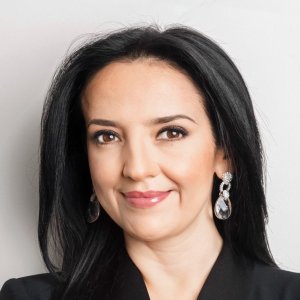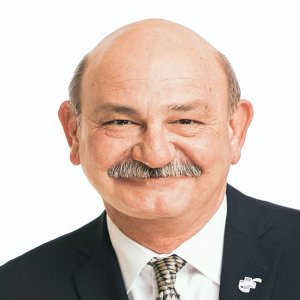A Chatbot that Challenges the Way You Think

STORY INLINE POST
Q: How does your application help people struggling with mental health issues?
A: Our conversational approach draws from cognitive behavioral therapy. This therapy proposes two theses. First, it suggests that we are not affected by events themselves but by how we perceive them. The second is that emotions are directly impacted by our thoughts. This means that prior to an emotion, there is a thought that can be identified. Our tactic is to first make people aware of all their automatic thoughts, so that they can identify when they have a negative one that’s distorting their perception. Someone who has depression or anxiety experiences way more negative thoughts on a daily basis than the common human, which only aggravates the illness.
At Yana, we are able to identify 12 cognitive distortions, but there are many more. Personalized responses allow us to identify which distortions apply to our users. These distortions are not mutually exclusive and people can have overlapping distortions. We proceed to challenge these automatic thoughts by asking if the user can, for example, think of alternative thoughts they could have in relation to a particular event or situation. Another approach is to ask for evidence of the perceived thought to challenge it. By changing their perceptions people can change how they feel emotionally.
Q: How has Yana’s system evolved to help patients?
A: We have moved from a chatbot designed for Facebook Messenger to our own application. We experienced significant challenges due to the continuous modifications of Facebook Messenger and the Google platform for Natural Language Processing we were using to run our chatbot. Our own application will allow us to have greater freedom in our coding process. This has also expanded our ability to run more conversation options. A typical chatbot centered around one topic has the ability to run 20-25 conversations, our robot can run around 7,000. As we continue to grow our capabilities, we can continue scaling. We just launched the first mobile application for Android, using React Native and PHP as the primary coding language. We will now focus part of our effort on adapting the application for iPhone. One of the improvements compared to our first chatbot is that we have been able to learn a great deal about the kinds of things that help our users and we can apply this information as we rebuild the application from scratch. While we cannot patent the code, we can patent our conversational basis.
Q: What is the thought concept behind Yana’s system?
A: Human thought can be divided into three layers. The first layer, the strongest, are core beliefs. These are formed at a young stage of life and, whether rational or irrational, are generally subconscious. They can be thoughts about oneself, other people or the world in general. For example: “I am stupid, everyone is against me”, or “the world is a bad place”. These core beliefs lead to attitudes, the intermediate layer, which humans are also not very conscious of. For example: someone who doesn't apply to a job offering because they already know they are a failure and won't be offered the spot.
The third layer are automatic thoughts. These are a consequence of your attitudes and core beliefs. "They say this because they hate me" would be an example for an automatic thought.
We start with the third layer, because if we ask people what their core beliefs are, they will have a hard time defining them. By starting at the surface, we can start to see patterns of thought and discern how they are related to particular factors in life. As users start to challenge their thoughts, things start to change in the background. We stop reinforcing our core beliefs and attitudes. The next step we take is to make this awareness of thoughts natural and suggest behaviors that can improve our state of mind.
Q: How do you manage more serious mental health cases, including suicidal tendencies?
A: We are explicit in stating that this application is not for crisis situations. We state this to our users. Our application does identify speech that can indicate a crisis, however. The application includes an SOS button, which directs you to the government’s suicide hotline. If users want therapy but are having problems finding suitable therapists, we provide a list of therapists they can contact.
The application, while not capable to replace a therapist, is certainly useful as a complement to therapy. One way it helps is that it tracks your mental state over time as it checks-in with the user every time it is used. For a therapist or psychiatrist, this can be useful and can save time during sessions. One of the elements that makes Yana accessible is that it allows people to express their feelings through a chat. This eliminates barriers for many people.
Q: Are you interested in working with health professionals, such as psychologists and psychiatrists?
A: There is the opportunity to employ Yana as part of the conventional therapy with a professional. The macro data we collect from our users also can provide useful information on what is causing mental health issues in larger groups. We have considered working with universities, for example, to adopt this application and collaborate to reduce mental health issues. The application could also work as a tool to prevent people from reaching a more serious mental state by alerting third parties in case of risk. Our goal is to develop another application that allows individuals to create a support network around them. While not sharing private information directly with your network participants, the application would make suggestions for action on the part of the other participating individuals based on one’s personal state. For example, when a user indicates they have certain negative thoughts or feelings, other participants could receive a notification to remind this person that they are loved or to invite them for dinner. If it is a higher risk situation, the network participants could receive an alert that the person needs to get treatment.
Q: What are your user growth expectations for this year?
A: Our goal is to have 100,000 active users by the end of June 2020.
Yana is a conversational approach tool that draws from cognitive behavioral therapy to track mental health. The company recently launched its first android application available to download








 By Jan Hogewoning | Journalist and Industry Analyst -
Mon, 04/20/2020 - 17:12
By Jan Hogewoning | Journalist and Industry Analyst -
Mon, 04/20/2020 - 17:12
















